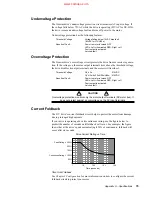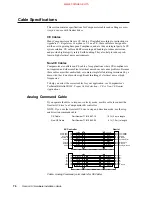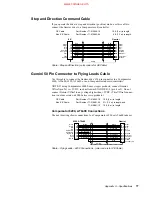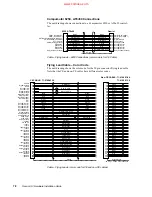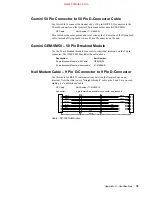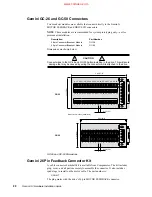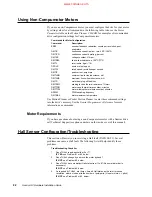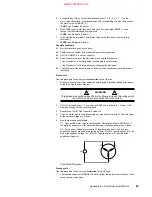
68
Gemini GV Hardware Installation Guide
Motor Thermal Switch Connections (optional)
Connect your motor’s thermal switch wires to pins 12 and 13 on the MOTOR
FEEDBACK connector.
The drive checks for electrical continuity between pins 12 and 13. This continuity
is usually provided by a normally-closed thermal switch mounted on the motor. If
the motor overheats and the thermal switch opens, the loss of continuity triggers
protection circuitry in the Gemini drive. The drive will turn off power output to the
motor, illuminate the left LED red, and set the motor fault and drive fault bits. You
can monitor the fault bits with the TAS and TASX commands.
To resume operations after the motor cools and its thermal switch closes, cycle
power or issue a DRIVE1 command.
If your motor does not have a thermal switch, short pins 12 and 13 together. The
drive will experience a motor fault if neither a thermal switch nor a jumper wire is
attached to pins 12 and 13.
Hall Effects
Connect your motor’s Hall effect wires to pins 14 – 18 on the MOTOR FEED-
BACK connector.
The Gemini GV drive is designed to be used with motors that have single-ended,
open collector Hall outputs. Internally, the drive pulls these signals up to +5V. The
Hall effect circuit is shown below.
Internal Connections
1K
Ω
10K
Ω
Same circuit as Hall A
Hall +5
Hall Ground
Hall A
Hall B
Hall C
14
15
16
17
18
MOTOR FEEDBACK Connector
+5V
250 mA maximum:
E5V and
Hall +5V combined
Hall Effect Connections
The Gemini drive uses the Hall effect inputs to synchronize the encoder with the
motor’s internal magnets at the start of motion. Initial commutation is trapezoidal;
once the drive establishes synchronization it changes to sinusoidal commutation
based on encoder position.
www.comoso.com






















